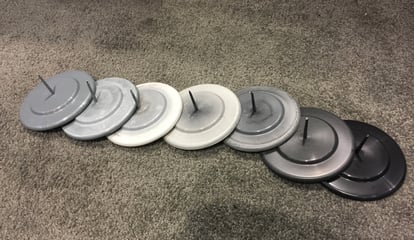
In the world of extrusion, material changes can be a significant bottleneck, leading to downtime, increased costs, and quality issues. I've seen these challenges firsthand during my visits to plastics manufacturing facilities. Recently, I worked with a wire coating company in Mexico that was struggling with frequent resin changes between Nylon and PVC. This blog highlights their journey, showcasing how purging compounds saved costs and improved product quality and operational efficiency.
The Initial Challenge: Time-Consuming Material Changes and Contamination Issues
For this company, each resin change meant stopping production, manually cleaning the screw, and dealing with the inevitable quality issues that arose from leftover contaminants. Black specks, degraded resin, and color residues were constant problems, affecting their transparent Nylon coatings and causing delays.
The Asaclean Solution: Introducing UF2
The team decided to test Asaclean UF2 grade, a mechanical purging compound specifically designed for challenging cleaning tasks. The results were transformative:
- Reduced Downtime: Downtime was cut from 8 hours to just 0.5 hours per purge, allowing the company to keep its production line running.
- Cost Savings: Each changeover now costs only $965, compared to $13,820 with traditional methods. Thus, per purge, you save $12,854—a 93% reduction.
- Annual Impact: Over a year, this translated to more than $4.6 million in savings.
Improving Quality and Consistency
Beyond the cost savings, the use of purging compounds also brought about significant quality improvements:
- Fewer Contaminants: it effectively cleared black specks and residual colors, enhancing the consistency of their products.
- Cleaner Resin Transitions: With UF2, the team experienced smoother transitions between PVC and Nylon, reducing quality defects and minimizing waste.
Boosting Operational Efficiency
Implementing the purge program simplified the entire material changeover process:
- Less Manual Cleaning: The team no longer needed to disassemble equipment for cleaning, freeing up time and reducing labor demands.
- Faster Startups: Equipment could be left ready for the next run, speeding up changeovers and enhancing overall productivity.
- Improved Work Environment: Reduced manual intervention meant less exposure to high temperatures and a safer, more efficient workspace.
Conclusion
This case study highlights how purging compounds can transform an extrusion process. By addressing both cost and quality challenges, the company improved its bottom line and enhanced its operational workflow. Exploring purging compounds could be a game-changer if you face similar production challenges.
Have you had similar experiences, or are you looking to optimize your extrusion process? Let's connect—I'd love to hear your story. Stay tuned as we continue to explore more real-world examples from the field.

Lazaro Estrada, a skilled Technical Sales Representative for Mexico at Asahi Kasei, has a distinguished engineering and process optimization background. Before joining Asahi Kasei, he was instrumental in developing projects with clients for the selection and implementation of injection and die-casting machinery, including overseeing their installation and startup of new processes. Holding a professional degree in Electronics with a specialization in automation, Lazaro's career has been defined by his leadership in project development, ranging from chemical industry reactors and synthesis to machinery and continuous improvement in the plastic industry. His expertise and forward-thinking approach make him a key resource for clients aiming to advance their operational capabilities.







Comments